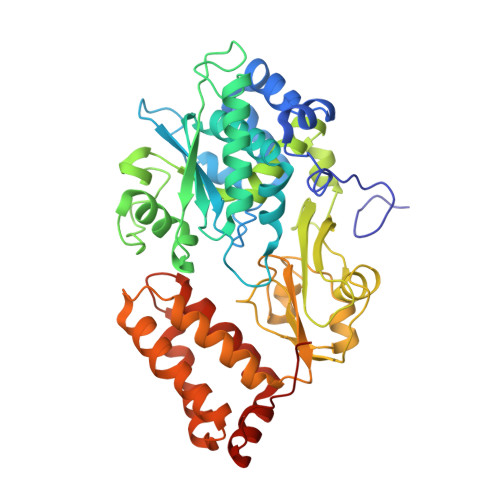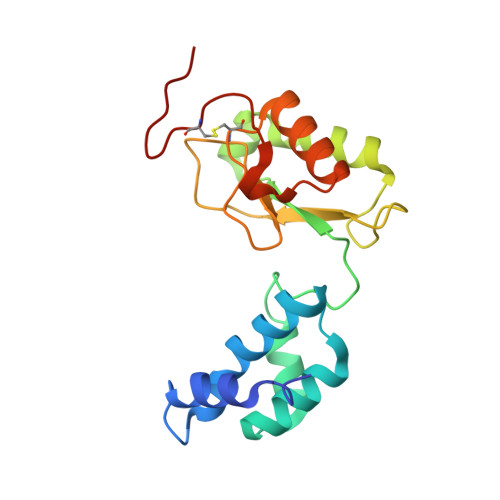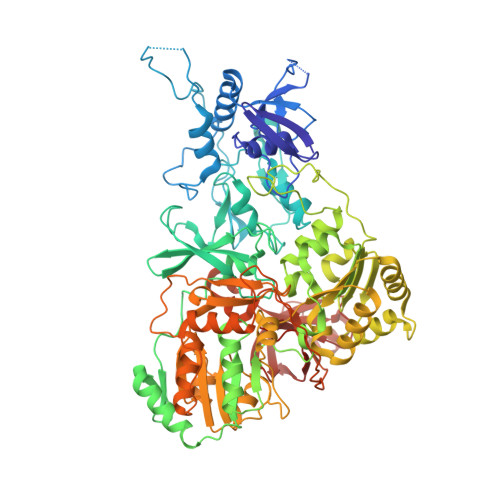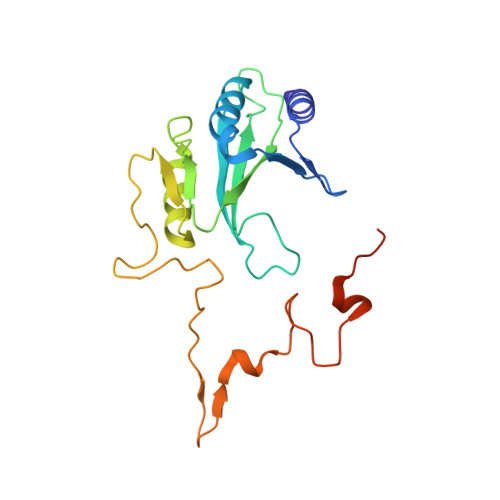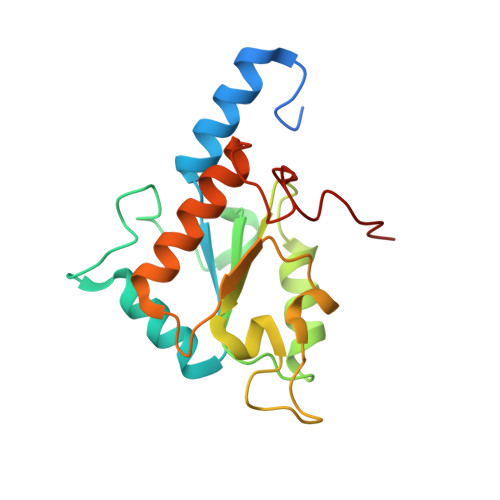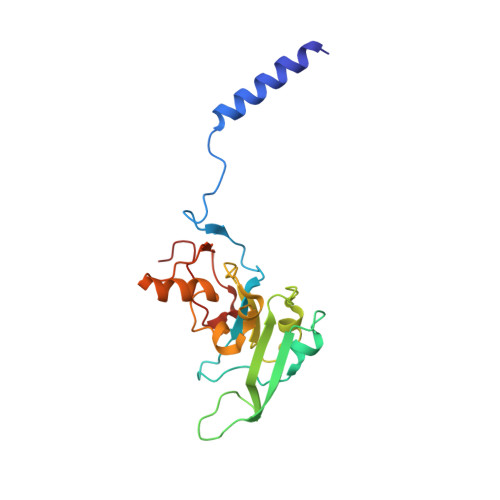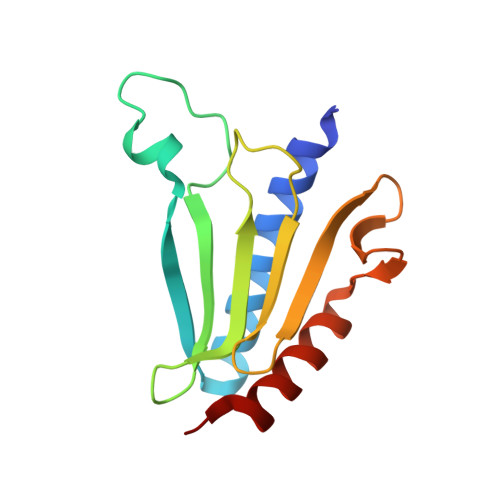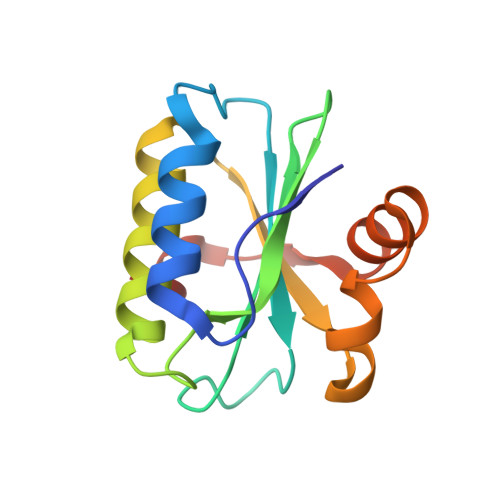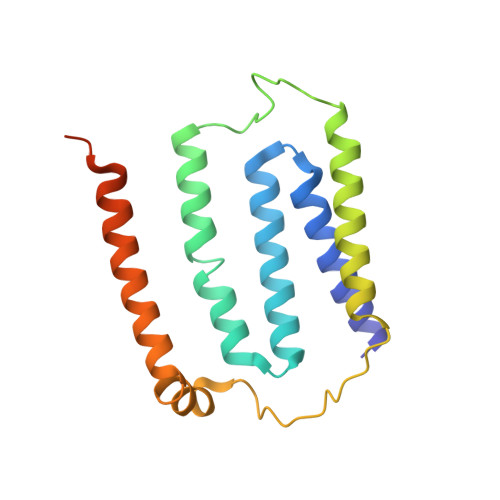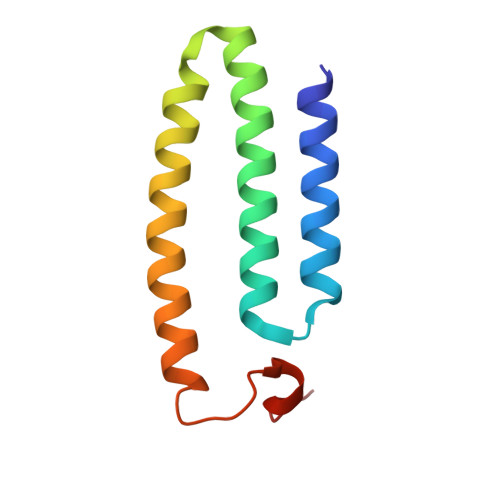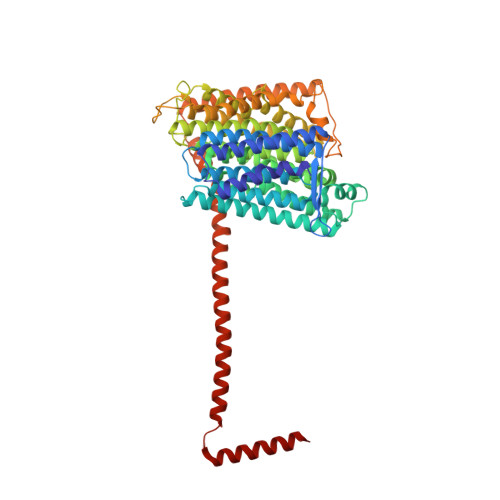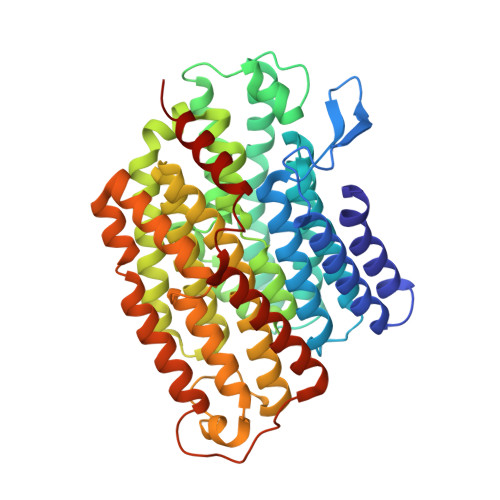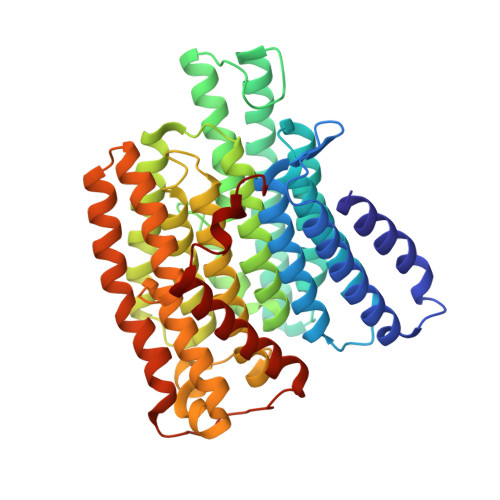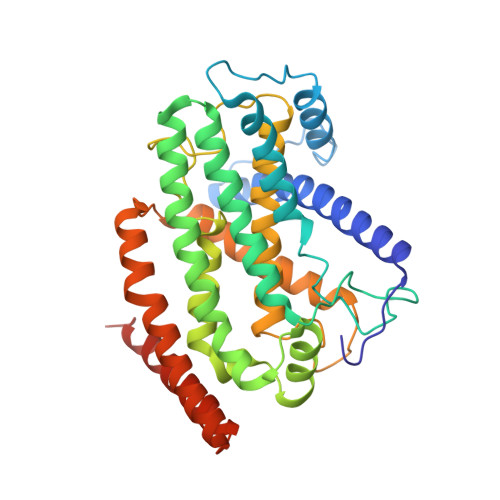Key role of quinone in the mechanism of respiratory complex I.
Gutierrez-Fernandez, J., Kaszuba, K., Minhas, G.S., Baradaran, R., Tambalo, M., Gallagher, D.T., Sazanov, L.A.(2020) Nat Commun 11: 4135-4135
- PubMed: 32811817
- DOI: https://doi.org/10.1038/s41467-020-17957-0
- Primary Citation of Related Structures:
6I0D, 6I1P, 6Q8O, 6Q8W, 6Q8X, 6Y11, 6ZIY, 6ZJL, 6ZJN, 6ZJY - PubMed Abstract:
Complex I is the first and the largest enzyme of respiratory chains in bacteria and mitochondria. The mechanism which couples spatially separated transfer of electrons to proton translocation in complex I is not known. Here we report five crystal structures of T. thermophilus enzyme in complex with NADH or quinone-like compounds. We also determined cryo-EM structures of major and minor native states of the complex, differing in the position of the peripheral arm. Crystal structures show that binding of quinone-like compounds (but not of NADH) leads to a related global conformational change, accompanied by local re-arrangements propagating from the quinone site to the nearest proton channel. Normal mode and molecular dynamics analyses indicate that these are likely to represent the first steps in the proton translocation mechanism. Our results suggest that quinone binding and chemistry play a key role in the coupling mechanism of complex I.
Organizational Affiliation:
Institute of Science and Technology Austria, Am Campus 1, A-3400, Klosterneuburg, Austria.








